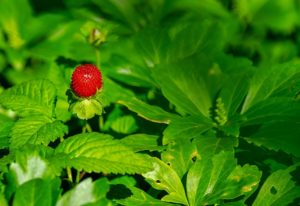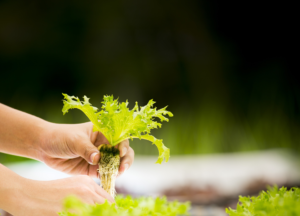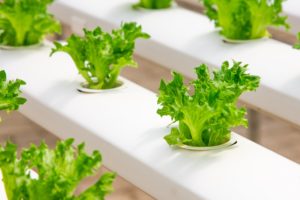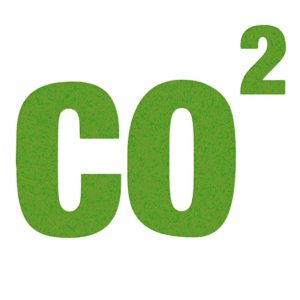Plants growing outside have sunlight to take in throughout their lifecycle. However, when growing plants in hydroponics, it’s up to you to provide light. There are plenty of hydroponic grow lights and lighting systems to choose from. That said, not all of them can take your plants from seedling to harvest. To have the best hydroponic crops, it’s important to understand how to provide light through each growth stage. This guide shows you everything you need to know about lighting for plant growth stages.
Grow lights for young plants
Young plants don’t need light in the same intensity or quantity that older plants do. Because of this, fluorescent lights are often used for early stages of growth. Fluorescent grow lights come as either CFL (Compact Fluorescent Lights), or T5 lights. Compact Fluorescent lights look more like elongated, spiral light bulbs, while T5 fluorescent lights look like tubes.
Try these T5 grow lights:
They’re inexpensive to purchase and run, since they use little electricity. Fluorescent grow lights also run ‘cool,’ meaning they produce very little heat. Young plants and seedlings don’t need a lot of heat, so CFL or T5 lights are ideal. It also means that if you have a small grow room or tent, ventilation isn’t a large concern.
Fluorescent lights are best for starting seeds, rooting, establishing clones, and very early vegetative growth stages.
Grow lights for vegetative stages
Plants in the vegetative growth stage spend the majority of their energy producing and strengthening foliage and stems or branches. There’s a high emphasis on growing the ‘green’ parts of the plant. To do this, they need plenty of blue light. The blue light mimics the sunlight during the spring and summer, when most plants are naturally in their vegetative stages.
Plants in the vegetative stage also need more time under lights. Many plants need between 14 to 18 hours of light when indoors. In this growth stage, plants also need more heat than in their earlier growth stages. Because of this, HID grow lights are one of the best options for plants in the vegetative growth stage. HID lights, or High-Intensity Discharge lights, are common as either HPS or MH. HPS stands for High-Pressure Sodium, while MH stands for Metal Halide. However, another type of HID light is available too- Ceramic Metal Halide, or CMH.
Metal Halide grow lights produce the bluest light of the three options. Of course, that makes MH lights the best choice for vegetative growth. However, Ceramic Metal Halide lights deliver a broader spectrum of light, including the blue portion. CMH lights don’t give off as much red light, so they’re still a good solution for vegetative growth.
When it comes to High-Pressure Sodium grow lights, you may want to wait to use these for later. That’s because they produce light that’s more on the red and orange part of the spectrum. Unfortunately, it’s not ideal for vegetative plants, and can prompt them to the flowering stage earlier than you’d like.
HID lighting systems do produce a fair amount of heat. That can be a bonus for your plants, but you need to keep an eye on it. Make sure there’s plenty of ventilation in your grow room. You may also need to check that there’s not too much heat directed to your plants. As plants grow larger, it’s a good idea to position your grow light higher up.
Grow lights for flowering stages
Light on the red end of the spectrum mimics sunlight as the season shifts to autumn. That’s why it’s important to have a hydroponic grow light that produces red light for flowering plants. There are different options for lighting systems for flowering plants. The most important thing is that the lights produce on the red and orange part of the spectrum.
High-intensity Discharge lights can still be used during the flowering stage. However, Metal Halide and Ceramic Metal Halide lights don’t produce enough red light to be efficient. That’s why High-Pressure Sodium grow lights are ideal for flowering stage plants, if you’re using HID grow lights. HPS lights are strong emitters of orange and red light, which gives flowering plants what they need.
The good news about using HID grow lights is that you don’t necessarily have to purchase two different lighting setups. You will need a ballast to supply and regulate power for your light bulbs. But, if you buy a conversion bulb, you can change your lights from MH to HPS bulbs without purchasing a new ballast. Essentially, it allows for growing plants through any stage.
LED, or Light Emitting Diode, grow lights are another great option for flowering plants. LED lights allow you to tailor the light emitted to match the part of the spectrum your plants need. Because of this, LED grow lights are suited to any plant growth stage. You can choose an RGB model, use filters, or more advanced models that change light color at your control. They cost more than other grow lights initially, but they last much longer too. LED grow lights also produce very little heat, which means you don’t need to worry about temperature regulation as much.
If you can invest in it,
an LED grow light is the most dynamic option.
Plants and the light spectrum
The light spectrum is made up of wavelengths. Each wavelength corresponds to a specific color. The portion of the light spectrum we’re most concerned with for hydroponics is visible light. Ultraviolet (UV) and Infrared (IR) are also part of the light spectrum, although neither is visible to our eyes. The type of lighting for plant growth stages really depends on some basic knowledge.
Visible light ranges from blue-violet to red-orange. The light spectrum is measured in nanometers, which describe the different wavelengths. When it comes to plants, the most important section of the spectrum is known as PAR, or Photosynthetically Active Radiation.

The PAR section, or band, spans 400 to 700 nanometers. The most important parts of the band, for plants, are at the beginning and ends. The middle of the band is primarily green light. Because plants produce chlorophyll, which makes them green, green light is reflected by plants, not absorbed.
400 to 490 nanometers contains blue light. This is the most important type of light for a plant growing foliage in the vegetative stage.
590 to 700 nanometers contains orange and red light. These are the most important types of light for plants in flowering and fruiting stages.
With this knowledge, you can easily decide if a grow light is appropriate for your plants’ growth stages based on the wavelength produced. Learn more about the different types of grow lights here.
FAQS: Grow lights, lighting in plant stages, and more
What type of grow light lasts the longest?
Fluorescent and High Intensity Discharge lights may be less expensive, but they also have shorter lifespans. Each of these last for around 10,000 hours. A Metal Halide and High-Pressure Sodium grow light will have about the same lifetime. LED grow lights are pricier upon initial purchase, but they also last much longer. The typical LED light can last for around 50,000 hours, or up to 15 years. As you can see, and LED light lasts the longest of any other grow light. Not only that, an LED grow light is far more efficient, making it an ideal choice for hydroponics.
Can I use fluorescent lighting for every growth stage?
Fluorescent lights aren’t very effective for most plants beyond the initial stages of growth. However, certain plants don’t need to flower, and compact fluorescent lights can be used. Lighting for plant growth stages can be touchy, so be aware if you do this. It’s an option best saved for small areas, or when you don’t have alternative lighting options. Leafy greens are an example of plants that can be grown to harvest fairly successfully with fluorescent lights. For plants needing the full light spectrum to harvest, like tomatoes or cannabis, fluorescents are best left to the beginning only.
How much light do I need in my grow room?
The best way to approach this is by considering wattage. Watts measure amounts of light, and it’s the most common measurement for any grow light. Plants that need a lot of light should have between 40 and 50 watts per square foot. Plants that don’t need much light should have around 20 to 30 watts per square foot. So if you’re growing peppers, which need a lot of light, and your grow area is 4’ x 4’, you need 40 watts per square foot.
Here’s how to calculate it:
4 x 4= 16. -This is the square footage in your grow area.
16 x 40 (watts needed per sq. foot) = 640 -In total, you need 640 watts for your grow area



